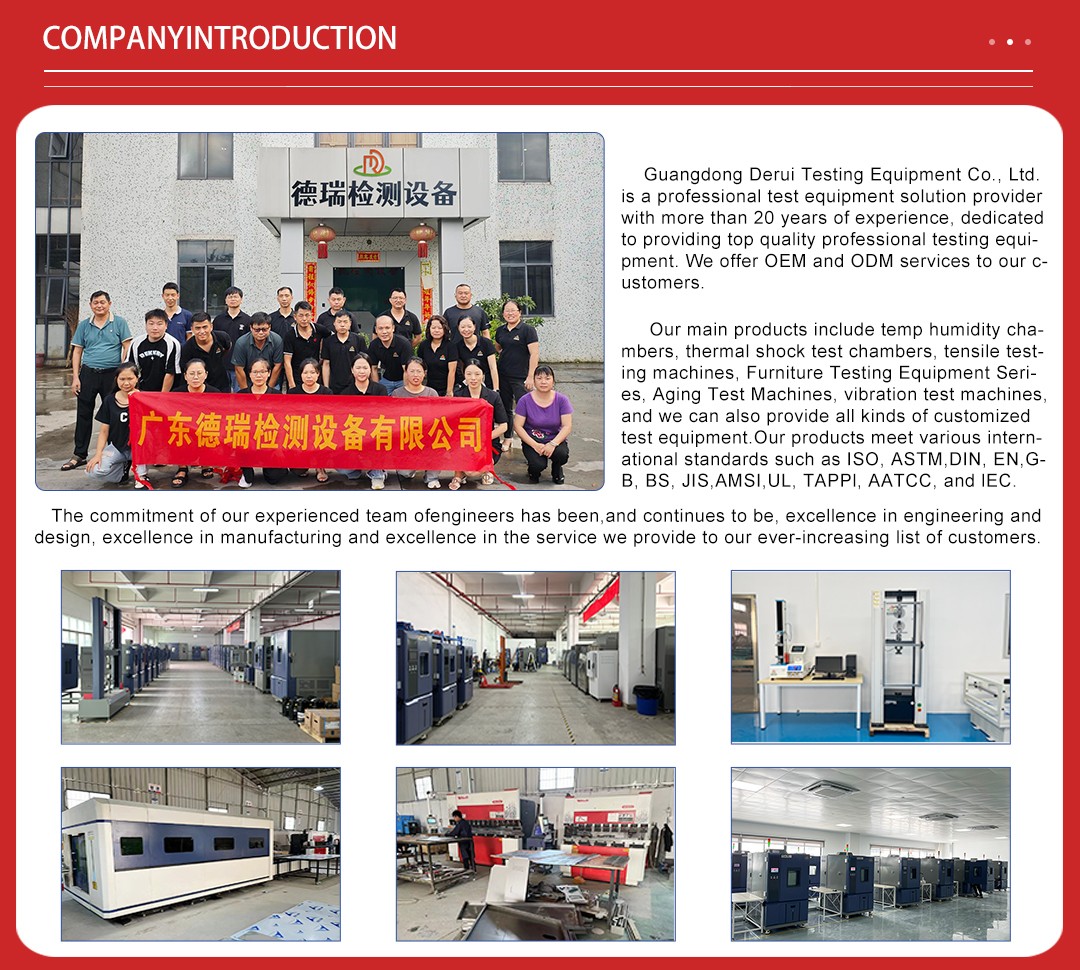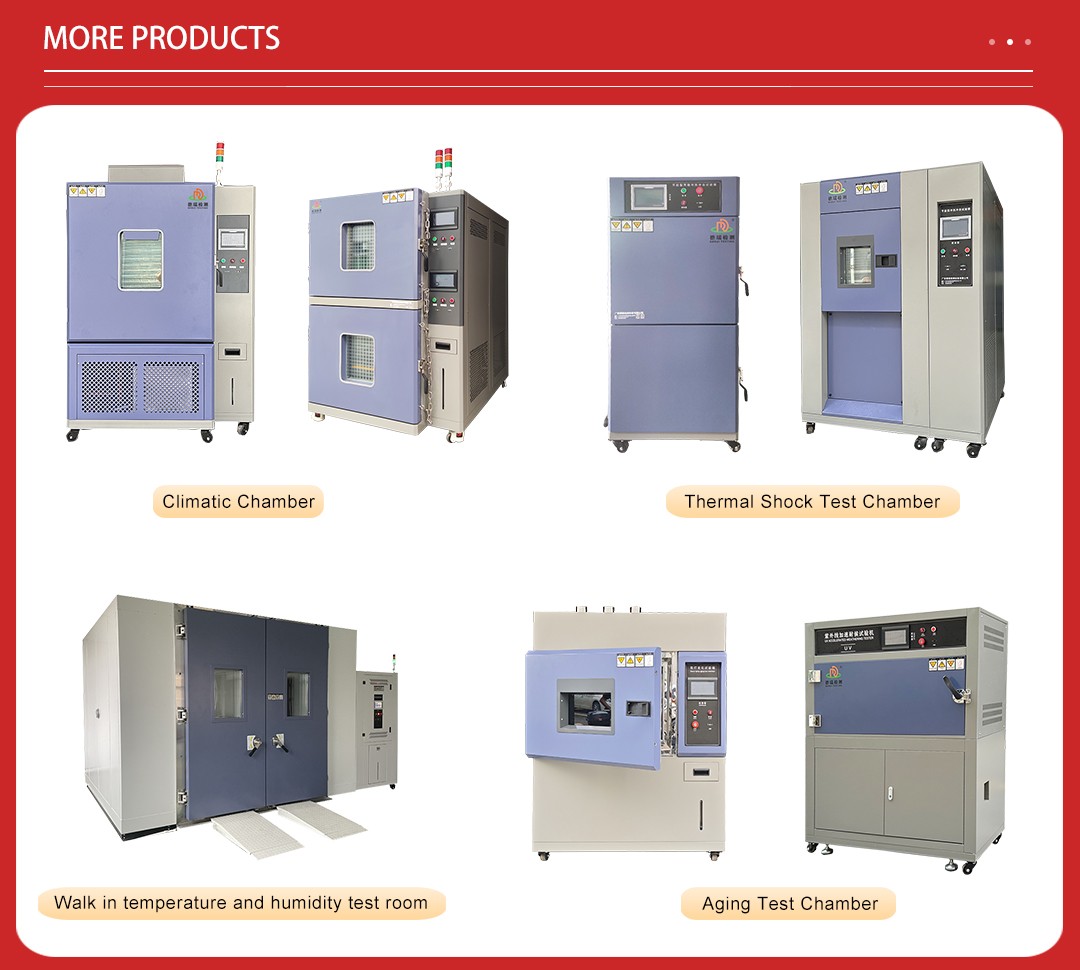
The Accelerated UV Aging Test Chamber stands as a pinnacle of modern testing technology, designed to rigorously simulate the natural environmental conditions that materials encounter, with a particula ...

The Accelerated UV Aging Test Chamber stands as a pinnacle of modern testing technology, designed to rigorously simulate the natural environmental conditions that materials encounter, with a particular focus on the detrimental effects of ultraviolet (UV) radiation. This chamber serves as a vital instrument in evaluating the long-term durability, stability, and weathering resistance of a wide array of materials, from plastics and rubbers to coatings, textiles, and more.

The Accelerated UV Aging Test Chamber finds its place in numerous industries, each with its unique set of requirements and challenges. In the automotive industry, it is used to test the durability of exterior components such as paint finishes, bumpers, and weather stripping. The construction sector employs it to evaluate the weathering performance of building materials like roofing membranes, siding, and sealants.
In the chemical industry, the chamber is crucial for studying the UV-induced reactions of chemicals, helping to predict their stability and shelf life. Electronics manufacturers rely on it to ensure that their products, from smartphones to solar panels, can withstand the rigors of UV exposure without degradation. The textile industry uses it to test the fade resistance and color stability of fabrics, ensuring that they maintain their appearance over time.

Advanced Product Features and Superior Performance
2. The chamber's automation capabilities are another standout feature. It can automatically cycle through different environmental conditions, such as UV exposure, condensation, and temperature extremes, to simulate real-world weather patterns. The use of programmable controllers and data logging systems enables researchers to closely monitor and record test parameters, ensuring repeatability and accuracy in results.
In-Depth Working Principle
2. Samples placed within the chamber are exposed to this UV radiation, along with controlled temperature and humidity cycles, to accelerate the aging process. The chamber's design ensures that UV light is evenly distributed across all samples, eliminating the need for frequent repositioning. Over time, the samples' surface changes, color fading, and physical property degradation are carefully observed and analyzed to assess their UV resistance and overall durability.
Comprehensive Product Functions
3. Furthermore, the chamber's construction materials, such as stainless steel and aluminum, are chosen for their corrosion resistance and durability, ensuring that the chamber itself can withstand the rigors of long-term use. Regular maintenance and calibration procedures further ensure the chamber's accuracy and reliability over time.

1. The surface of the specimen from the lights from the nearest parallel to the surface: about 50mm
2. Wavelength range: UV-A wavelength range of 315 ~ 400nm
3. Within the radiation intensity 1W/m2/340nm
4. Temperature Resolution: 0.1 ℃
5. Light Temperature range: 50 ℃~ 70 ℃/ temperature tolerance of ± 3 ℃
6. Condensing temperature range: 40 ℃~ 60 ℃/ temperature tolerance of ± 3 ℃
7. Blackboard thermometer measuring range: 30 ~ 80 ℃/ tolerance of ± 1 ℃
8. Temperature control: PID self-tuning temperature control mode
9. Humidity range: about 45% ~ 70% R.H
10. Sink requirements: water depth less than 50mm, and a water supply automatic controller
11. Standard Specimen size: 75 × 150mm 48pcs
12. Recommended instrument environment: 5 ~ 35 ℃, 40% ~ 85% R • H, 300mm from the wall
13. Voltage: 220V ± 5%, single-phase three-wire, 50Hz, 10A, 15A GFCI requirements

The Accelerated UV Aging Test Chamber is a sophisticated device that harnesses the power of UV light, typically emitted by high-quality fluorescent UV lamps or xenon arc lamps, to mimic the UV component of sunlight. Coupled with precise control systems for temperature and humidity, this chamber creates an environment that accelerates the aging process of materials, allowing researchers and manufacturers to assess their products' performance under extreme conditions in a fraction of the time it would take in the real world.
The chamber's design is both robust and versatile, capable of accommodating various sample sizes and shapes. Its interior is often lined with materials that reflect UV light to ensure even exposure across all samples. Adjustable sample racks and easy-to-access control panels further enhance its usability, making it an ideal choice for both research and quality control applications.
Detailed Testing Operation Process
3. After the test is completed, the samples are carefully removed and inspected for any signs of aging or degradation. This may include visual inspection for color changes, measurements of physical properties such as tensile strength and elongation, and chemical analysis to detect any UV-induced reactions. The data collected during the test is then analyzed to provide insights into the materials' UV resistance and overall durability.
In conclusion, the Accelerated UV Aging Test Chamber is a powerful and versatile tool for assessing the durability and performance of materials under simulated environmental conditions. Its wide range of applications, advanced features, and precise control capabilities make it an indispensable piece of equipment for researchers, product developers, and quality control professionals across various industries. By simulating the damaging effects of UV radiation and other environmental factors, this chamber enables them to predict and improve the long-term performance of their products, ultimately leading to more durable, reliable, and sustainable materials.


Not search wanted products